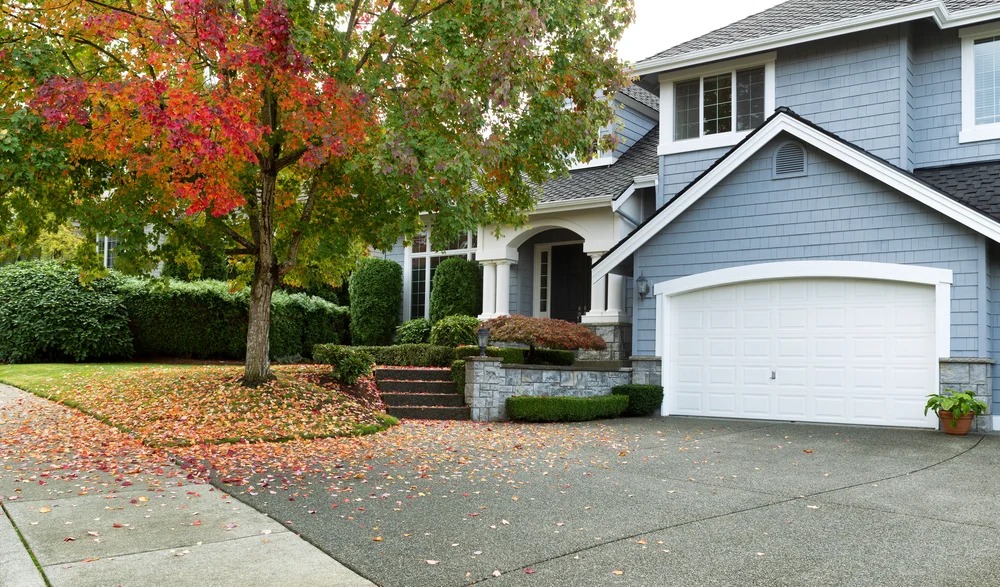Dealing with Florida’s intense heat can be tough, especially when it comes to keeping your garage cool.
The soaring temperatures can turn your garage into an uncomfortable space, making it hard to get things done.
But with some clever tactics and useful solutions, you can make sure your garage stays cool even during the hottest days.
Check out our tips to stay cool and make your Florida garage a more pleasant place to be:
Insulate Your Garage
Proper insulation is key to keeping your garage cool. Insulating the walls and ceiling helps to regulate the temperature by preventing heat from entering during the day and escaping at night. Consider using insulation materials such as foam board, fiberglass batts, or spray foam insulation to effectively seal any gaps and keep the heat out.
Here are some additional reasons why insulating your garage door in Florida is important:
Prevention of Garage Door Damage
Florida is prone to tropical storms and hurricanes, which can bring strong winds and heavy rain. Insulating your garage door can help reinforce its structure, making it more resistant to damage from high winds and flying debris during severe weather events.
This added protection not only safeguards your property inside the garage but also helps prevent costly repairs or replacements to the garage door itself.
Improved Air Quality
Insulation can help reduce the infiltration of dust, pollen, and other outdoor pollutants into the garage.
This is particularly beneficial for individuals with allergies or respiratory issues, as it helps maintain a cleaner and healthier environment inside the garage and adjacent living spaces.
Enhanced Comfort
In addition to regulating temperature, insulation also contributes to overall comfort by reducing drafts and creating a more pleasant indoor environment.
This can be especially important if you spend time working or relaxing in the garage, as it allows you to enjoy the space comfortably regardless of the outdoor conditions.
Compliance with Building Codes
Some municipalities in Florida may have building codes or regulations that require garage doors to be insulated, especially in areas prone to extreme temperatures or severe weather.
Insulating your garage door ensures compliance with these codes and helps avoid potential penalties or fines.
Environmental Benefits
By reducing energy consumption and improving efficiency, insulated garage doors have a positive impact on the environment.
Lower energy usage means reduced greenhouse gas emissions associated with electricity generation, contributing to efforts to mitigate climate change and promote sustainability.
Noise Pollution Reduction
Insulating your garage door not only prevents outside noise from entering the garage but also helps contain noise generated inside, such as from power tools or machinery.
This can be beneficial for maintaining good relationships with neighbors and minimizing disturbances to the surrounding community.
Install a Ventilation System
Adequate ventilation is essential for maintaining airflow and reducing humidity in your garage. Install exhaust fans or vents to expel hot air and moisture, particularly in areas prone to humidity buildup such as laundry areas or near water heaters.
Additionally, consider adding a ridge vent or gable vents to promote air circulation and prevent heat buildup in the attic space above your garage.
Use Reflective Roofing Materials
The Florida sun can beat down relentlessly on your garage roof, causing it to absorb and radiate heat into the space below.
Consider installing reflective roofing materials such as metal or white membrane roofing to reduce heat absorption and keep your garage cooler.
These materials can help to reflect sunlight away from your garage, preventing excessive heat buildup.
Create Shade Outside
Minimize heat transfer into your garage by creating shade outside.
Planting trees or installing awnings or pergolas can help to block direct sunlight from hitting your garage walls and roof.
By shading the exterior of your garage, you can significantly reduce the amount of heat that penetrates into the space, keeping it cooler and more comfortable.
Seal Air Leaks
Check for any gaps or cracks around windows, doors, and other openings in your garage and seal them properly to prevent hot air from infiltrating.
Use weatherstripping or caulking to seal gaps and keep cool air in and hot air out. Pay special attention to areas where pipes or wiring enter your garage, as these are common entry points for heat and humidity.
Use Portable Cooling Solutions
In addition to permanent solutions, consider using portable cooling devices such as fans, air conditioners, or evaporative coolers to provide instant relief from the heat.
Place fans strategically to promote air circulation, and use portable air conditioners or evaporative coolers to lower the temperature in specific areas of your garage as needed.
Limit Heat Sources
Minimize heat-generating activities in your garage, especially during the hottest parts of the day. Avoid running appliances such as dryers or ovens in your garage, as these can contribute to heat buildup.
Additionally, store heat-sensitive items such as paints, chemicals, and electronics in a cool, shaded area to prevent them from overheating.
Use Heat-Reflective Paint
Consider painting the exterior walls and roof of your garage with heat-reflective paint.
These specialized coatings are designed to reflect sunlight away from your garage, reducing heat absorption and keeping the interior cooler. Look for paint products labeled as “cool roof” or “heat-reflective” for optimal results.
Install Window Treatments
If your garage has windows, install window treatments such as blinds, shades, or reflective window films to block out sunlight and reduce heat gain.
Choose light-colored or reflective window coverings to help reflect sunlight away from your garage and maintain a cooler temperature indoors.
Create Cross Ventilation
Take advantage of natural airflow by creating cross ventilation in your garage.
Open windows and doors on opposite sides of the garage to allow fresh air to flow through and push out hot, stagnant air. Installing louvered windows or vents can further enhance airflow and promote ventilation.
Use Thermal Mass
Incorporate thermal mass materials such as concrete or masonry into your garage design to help regulate temperatures.
These materials have the ability to absorb and store heat during the day, releasing it slowly at night when temperatures are cooler.
By leveraging thermal mass, you can help stabilize indoor temperatures and reduce the need for active cooling.
Utilize Cool Roofing Technologies
Explore innovative cool roofing technologies such as green roofs or cool roof coatings to mitigate heat absorption and reduce energy consumption.
Green roofs, which consist of living vegetation planted on the roof surface, provide natural insulation and evaporative cooling benefits.
Cool roof coatings contain reflective pigments that help to reflect sunlight and reduce roof temperatures, lowering cooling costs and prolonging the lifespan of your roof.
Schedule Activities Wisely
Plan your activities in the garage during the cooler parts of the day, such as early morning or late evening, to avoid the peak heat hours.
By scheduling tasks strategically, you can minimize exposure to high temperatures and maximize comfort while working or spending time in your garage.
Invest in Energy-Efficient Lighting
Replace traditional incandescent bulbs with energy-efficient LED lighting to reduce heat output and energy consumption in your garage.
LED lights produce minimal heat compared to conventional bulbs, helping to keep your garage cooler and more comfortable.
Additionally, consider installing motion sensors or timers to automatically turn off lights when not in use and further conserve energy.
Utilize Cool Storage Solutions
Store heat-sensitive items such as tools, electronics, and chemicals in insulated containers or cabinets to prevent them from overheating. Consider investing in temperature-controlled storage units or shelves with built-in ventilation to keep items cool and well-ventilated, especially during the hot summer months.
Create a Cool Zone
Designate a specific area within your garage as a “cool zone” where you can retreat to escape the heat.
Set up a comfortable seating area with a portable fan or air conditioning unit to provide instant relief when needed. This designated cool zone can serve as a comfortable space to take breaks, relax, or work on projects without being affected by the heat.
Use Heat-Resistant Materials
Choose heat-resistant materials for flooring, countertops, and work surfaces in your garage to prevent them from absorbing and radiating heat.
Options such as epoxy flooring, stainless steel countertops, and heat-resistant workbenches can help maintain a cooler environment and withstand the rigors of a hot garage.
Optimize Landscaping
Strategically plant trees, shrubs, or vines around your garage to provide natural shade and insulation.
Select heat-tolerant plant species that thrive in Florida’s climate and can help to cool the surrounding area.
Planting vegetation near your garage can also help to improve air quality, reduce ambient temperatures, and create a more aesthetically pleasing environment.
Install a Mini-Split Air Conditioner
Consider installing a mini-split air conditioning system in your garage for targeted cooling and energy efficiency.
Mini-split AC units consist of an outdoor compressor unit and one or more indoor air handlers, allowing you to customize the cooling capacity and zone control for your garage space.
These ductless systems are easy to install, operate quietly, and provide efficient cooling without the need for extensive ductwork.
Monitor Humidity Levels
Keep an eye on humidity levels in your garage and take steps to control excess moisture, which can exacerbate heat-related discomfort and promote mold and mildew growth.
Use a hygrometer to measure humidity levels regularly and use dehumidifiers or moisture-absorbing products to maintain optimal indoor air quality.
Conclusion
Creating a cooler environment will enhance usability and improve overall comfort year-round.
With a combination of insulation, ventilation, shading, and cooling technologies, you can transform your garage into a more enjoyable and functional space despite the challenging climate in Florida.


